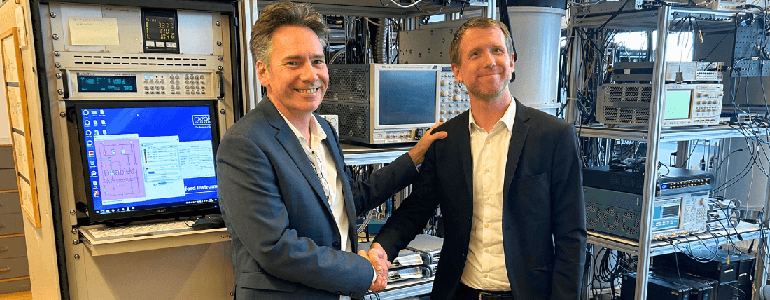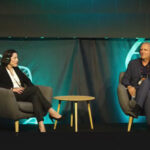Innovation District Copenhagen-partner launches quantum partnership with global top university MIT
Quantum computers could change the world but making advanced versions of them requires scientific breakthroughs. Now, American university Massachusetts Institute of Technology (MIT) has signed a four-year collaboration agreement with Innovation District Copenhagen-partner University of Copenhagen (UCPH). With the collaboration, MIT’s Engineering Quantum Systems group and Novo Nordisk Foundation Quantum Computing Programme at UCPH hope to accelerate research in the development of advanced quantum computers.
Solving quantum puzzles
Researchers and students at the two universities will join forces to solve quantum puzzles that continue to challenge researchers worldwide in the race to develop so-called fault tolerant quantum computers. These new supercomputers are expected to have unprecedented computational power for certain problems. Powers that could to solve some of the greatest mysteries in the universe.
This is an enormous recognition of our work at UCPH. MIT’s Engineering Quantum Systems group is part of the international top echelon of quantum computing research. This project enables Danish research in quantum computing hardware to learn from the best as we collaborate on developing hardware for next generation fault-tolerant quantum computing”: Morten Kjaergaard, Associate Professor of Quantum Information Physics, Villum Young Investigator and research group leader at the Niels Bohr Institute at UCPH.
Identical labs on either side of the Atlantic
MIT’s Research Laboratory of Electronics (RLE) also sees immense potential in this joint research. The agreement entails building two identical quantum laboratory setups—one at UCPH and one at MIT—both financed by the Novo Nordisk Foundation Quantum Computing Programme. This initiative lets the two universities continuously collaborate to develop research into fault tolerant quantum computers, as well as exchange know-how, software, and students. According to the Associate Director of the RLE, the collaboration opens exceptional opportunities.
To realize the promise of quantum computing, we must learn how to build systems that are robust, reproducible, and extensible. This unique program enables us to innovate faster by exchanging personnel and ideas, running parallel experiments, and comparing results. Even better, we get to continue working with Prof. Kjaergaard, a rising star in the field, and his team in Copenhagen. This is the way:” William Oliver, Professor, Center for Quantum Engineering, MIT
Diplomatic attention
The joint project is not only attracting attention in the academic world. The American Ambassador to Denmark also praises the new collaboration as he establishes that Copenhagen is an epicentre for quantum research
This collaboration showcases how strong international relationships drive research forward. Copenhagen is an epicentre for quantum research, and forming key partnerships with U.S. institutions like MIT is a great step for further development of the Danish quantum ecosystem”: Alan Leventhal, Ambassador to Denmark for the USA.
A thriving quantum community within an 800 meter radius
University of Copenhagen has been a global centre for quantum research since 1921 when physicist Niels Bohr leveraged a Nobel Prize into funding for an institute bearing his name. This collaboration with MIT follows several years of significant investments in the quantum field in Denmark and in Innovation District Copenhagen specifically.
- NATO DIANA Quantum Centre.
- University of Copenhagen’s Novo Nordisk Foundation Quantum Computing Programme.
- The Quantum Foundry.
- A.P. Møller Foundation “Center for Educational Quantum Advantage”.
- Deep Tech Lab Quantum.
- University of Copenhagen MSc programme in Quantum Science.
- Copenhagen Center for Biomedical Quantum Sensing
Result of a focussed effort to train world class researchers
The program, based at UCPH’s Niels Bohr Institute, has a mission to enable the development of fault tolerant quantum computing hardware and quantum algorithms that solve life-science relevant chemical and biological problems.
This collaboration is the result of nearly a decade of focused efforts to attract and train world-class researchers. Today, we are an attractive partner for foundations, organisations, and, as in this case, one of the world’s best universities. That makes me proud,” says the Rector of the University of Copenhagen Henrik C. Wegener.
About Innovation District Copenhagen
Join us in Innovation District Copenhagen – a world-class innovation district where you can transform your bright ideas into growth, jobs, and global solutions.
- Co-locate with University of Copenhagen, University Hospital Rigshospitalet, University College Copenhagen (KP) and 500 innovative companies.
- Co-create with 40,000 researchers, staff and students.
- Collaborate to develop new solutions to societal challenges.
- Find a job with leading academic institutions and deep-tech companies.
Learn more about the Innovation District Copenhagen organisation.




